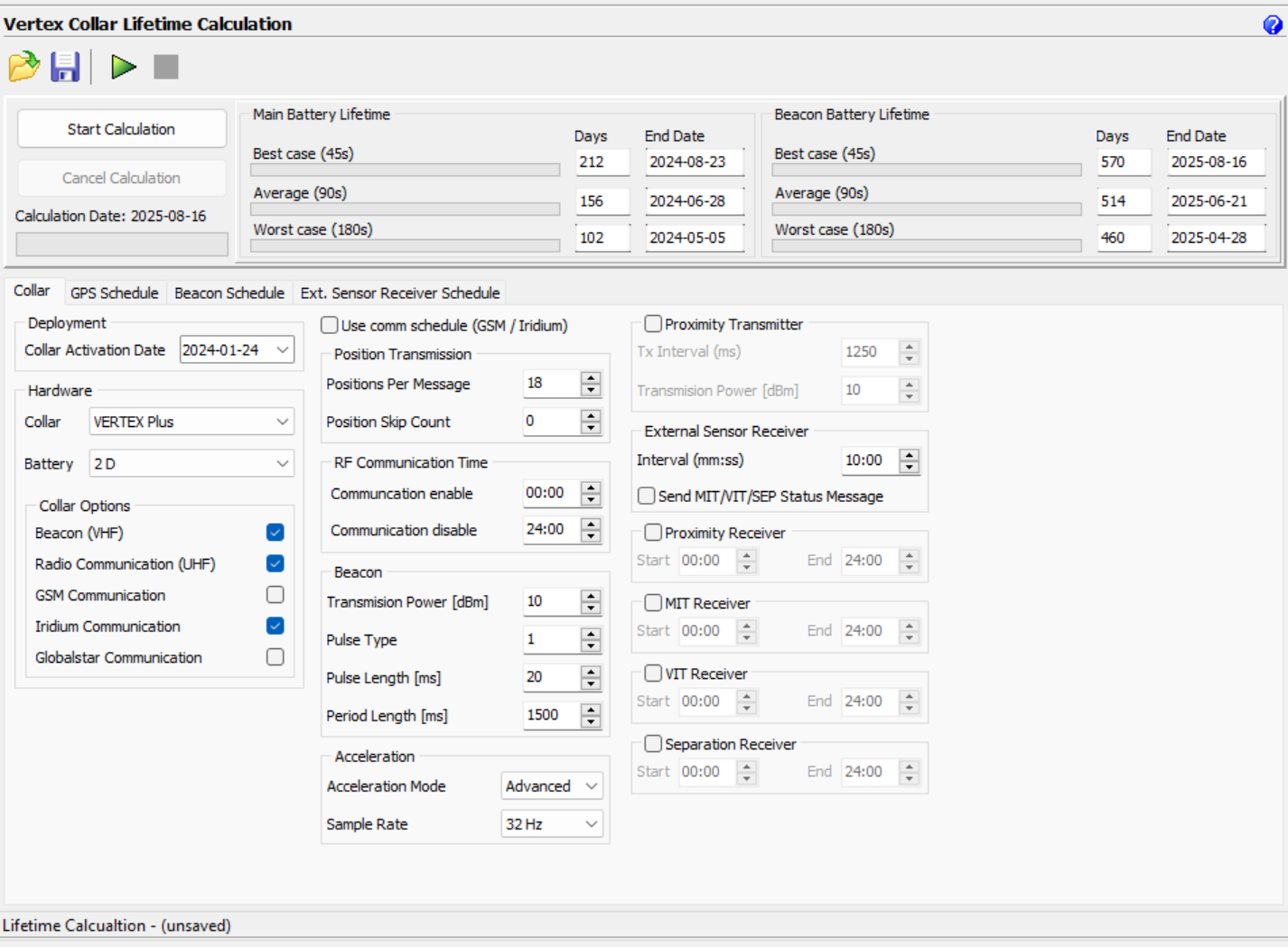Hey!
If anyone here has had any experience using solar panels to extend the battery life of their tracking collars, I would love to hear from you!
How effective was the increased battery life when compared to the increased cost? Any trouble with their efficiency declining after time?
What animal did you deploy them on and do you remember some of the general settings you had used?
Any other sensors drawing power from the battery besides GPS? (Accelerometers?)
I understand that a lot of the outcome depends on sampling rates, GPS fix success, battery size, etc., but I'm just trying to get a general idea of anyone's experience or opinions on them before digging into these other variables.
Thanks for any insight!
Best,
Travis
7 January 2024 1:48pm
Hi Travis!
I do have some experience with solar powered GPS collars from Milsar.
Solar powered GPS trackers including accelerometers and sometimes magnetometers are widely used for birds.
Milsar modified one of the bird trackers for use as a collar. We used it on arctic fox in Greenland and the same model has also been used on koalas in Australia:
We did not have issues with the solar charging system itself but the ruggedness of the collar in general was lacking and not up the the hard life of an arctic fox.
Movebank
"> <link rel=
The solar panel charging during the summer meant that we could use relatively high position fix rates (4 minute intervals) and colaborators have also done high frequency accelerometry bursts:
Digging into the behaviour of an active hunting predator: arctic fox prey caching events revealed by accelerometry | Movement Ecology | Full Text
Biologging now allows detailed recording of animal movement, thus informing behavioural ecology in ways unthinkable just a few years ago. In particular, combining GPS and accelerometry allows spatially explicit tracking of various behaviours, including predation events in large terrestrial mammalian predators. Specifically, identification of location clusters resulting from prey handling allows efficient location of killing events. For small predators with short prey handling times, however, identifying predation events through technology remains unresolved. We propose that a promising avenue emerges when specific foraging behaviours generate diagnostic acceleration patterns. One such example is the caching behaviour of the arctic fox (Vulpes lagopus), an active hunting predator strongly relying on food storage when living in proximity to bird colonies. We equipped 16 Arctic foxes from Bylot Island (Nunavut, Canada) with GPS and accelerometers, yielding 23 fox-summers of movement data. Accelerometers recorded tri-axial acceleration at 50 Hz while we obtained a sample of simultaneous video recordings of fox behaviour. Multiple supervised machine learning algorithms were tested to classify accelerometry data into 4 behaviours: motionless, running, walking and digging, the latter being associated with food caching. Finally, we assessed the spatio-temporal concordance of fox digging and greater snow goose (Anser caerulescens antlanticus) nesting, to test the ecological relevance of our behavioural classification in a well-known study system dominated by top-down trophic interactions. The random forest model yielded the best behavioural classification, with accuracies for each behaviour over 96%. Overall, arctic foxes spent 49% of the time motionless, 34% running, 9% walking, and 8% digging. The probability of digging increased with goose nest density and this result held during both goose egg incubation and brooding periods. Accelerometry combined with GPS allowed us to track across space and time a critical foraging behaviour from a small active hunting predator, informing on spatio-temporal distribution of predation risk in an Arctic vertebrate community. Our study opens new possibilities for assessing the foraging behaviour of terrestrial predators, a key step to disentangle the subtle mechanisms structuring many predator–prey interactions and trophic networks.
The large tracking device manufacturers lake Lotek and Vectronic are also now making solar based collars but none of the available models are small enough for our arctic foxes.
Best regards,
Lars
22 January 2024 5:58pm
This sounds like a great project.
Lars is very wise to point out clock drift as an issue. Unfortunately, clock drift is often temperature dependent, so depending on how crispy you need your timestamps to be, it is not always a great patch to apply a linear adjustment at the end of say 4 months... but it is surely better than nothing. You may not need super precise timestamps?
If you do go solar, and you've got some power information, you can do a better adjustment by tracking the daily solar cycle. You may also be able to track the daily cycle through sleeping patterns?











Lars Holst Hansen
Aarhus University